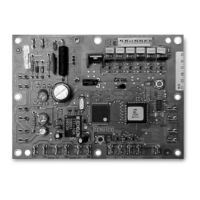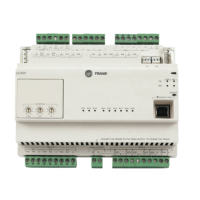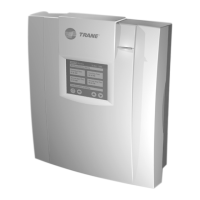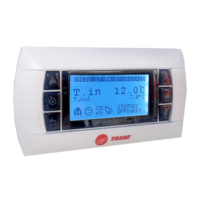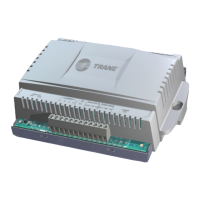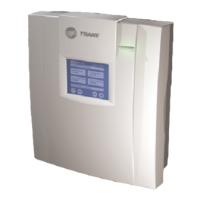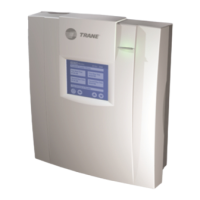Occupancy modes
CNT-SVX06B-EN 49
Unoccupied mode
In unoccupied mode, the controller attempts to maintain the zone temper-
ature based on the unoccupied heating or cooling set point. The fan will
cycle between high speed and off. The outdoor air damper will remain
closed. The controller always uses the stored default set-point values
(configurable in Rover), regardless of the presence of a hardwired or com-
municated set-point value.
Occupied standby mode
The controller is placed in occupied standby mode only when a communi-
cated occupied request is combined with an unoccupied request from
occupancy binary input BI3. In occupied standby mode, the controller
maintains the zone temperature based on the occupied standby heating
or cooling set points. Because the occupied standby set points are typi-
cally spread 2°F (1.1°C) in either direction and the outdoor air damper is
closed, this mode reduces the demand for heating and cooling the space.
The fan will run as configured (continuous or cycling) for occupied mode.
The controller always uses the stored default set-point values (config-
urable in Rover), regardless of hardwired or communicated set-point val-
ues.
Occupied bypass mode
The controller is placed in occupied bypass mode when the controller is
operating in the unoccupied mode and either the timed override ON but-
ton on the Trane zone sensor is pressed or the controller receives a com-
municated occupied bypass signal from a BAS. In occupied bypass mode,
the controller maintains the zone temperature based on the occupied
heating or cooling set points. The fan will run as configured (continuous
or cycling). The outdoor air damper will close when the fan is off. The con-
troller will remain in occupied bypass mode until either the CANCEL
button is pressed on the Trane zone sensor or the occupied bypass time
(configurable in Rover) expires. The temperature set points can be local
(hardwired), communicated, or stored default values (configurable in
Rover).

